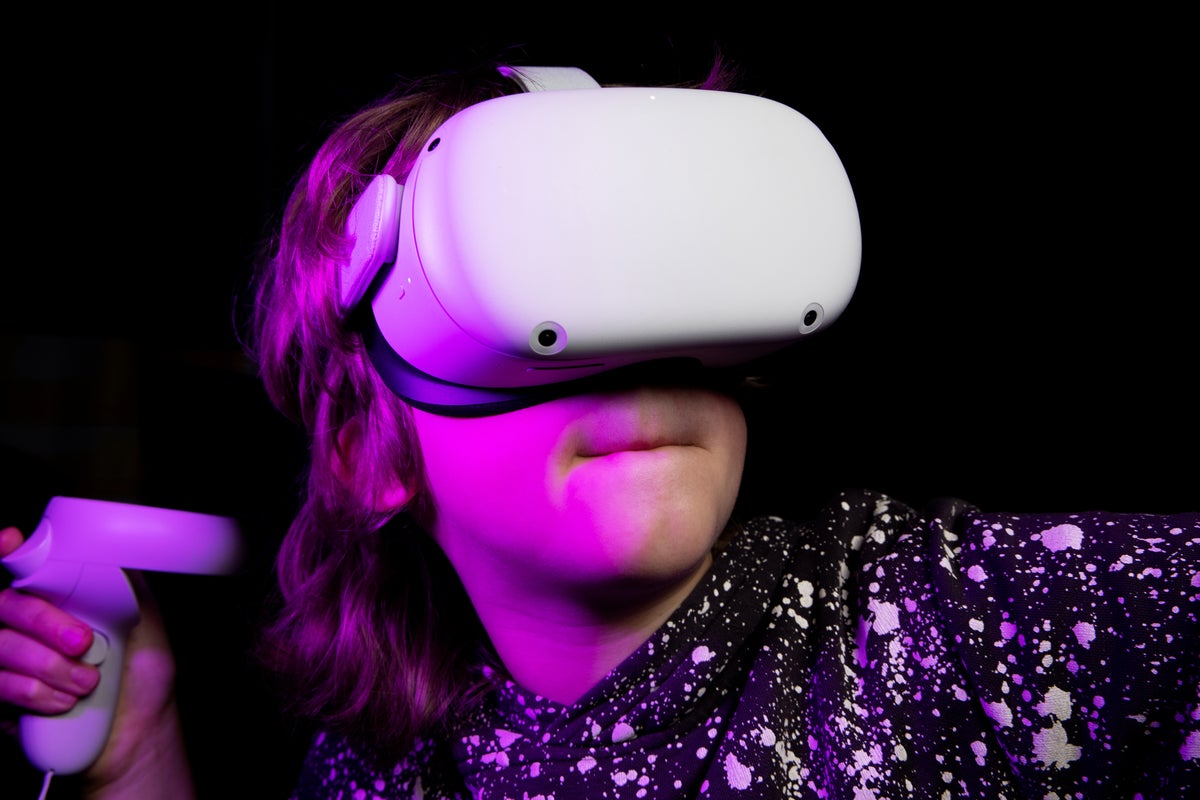[ad_1]
Meta Inc. FB is expected to unveil its next headset — the Quest Pro — during the Meta Connect 2022 conference on Oct. 11.
This device has a professional mixed reality (MR) focus, putting it in contrast with the consumer-oriented virtual reality-focused headsets released so far by the firm.
What Happened: The Meta Quest Pro — which went by its codename “Project Cambria” — appears to not have many secrets despite not having yet launched to the public. A recently leaked video seemingly shows off the final Meta Quest Pro design, and box art that appears to confirm the name and the belief that it will launch at the Connect conference is based on the fact that Meta CEO Mark Zuckerberg said during a “Joe Rogan Experience” podcast episode that it would launch on that occasion.
This will be a productivity headset designed to complement and even replace a laptop with a strong focus on videoconferencing. It will feature advanced sensors that will be able to capture the user’s facial expressions so that they can be replicated by their avatar in the metaverse.
Zuckerberg promised that the device would allow using multiple virtual screens while also being able to see — and interact with — one’s environment and use a physical keyboard to type on the device. How much of what we see is real would be fluid, with the user being able to decide between a virtual environment where only the keyboard is present or the real environment with virtual screens.
The headset is expected to have 12 gigabytes of random access memory — double as much as the Quest 2, the company’s current flagship headset — allowing for much more aggressive multitasking. The device will also introduce color stereoscopic passthrough mode (a mode that allows the user to view their surroundings without losing depth perception) and pancake lenses allowing for a much slimmer and lighter design.
Last month, a man by the name of Ramiro Cardenas purportedly discovered a Quest Pro unit inside a hotel Room and posted about it on Reddit, followed by video proof. The device is expected to be priced at $1,500 per unit, significantly higher than Quest 2’s price of $400 but in line with claims that this will be a premium device aimed at professionals. The Meta Quest Pro will come with a head-mounted display, a charging bar, controllers, cables and documents in the box.
Oculus Quest Renderings | Brad Lynch
This puts the Meta Quest Pro’s price above that of the $699 HTC Vive Cosmos Elite and the $999 Valve Index, considered by many to be the best VR headsets in the market. Still, this is a device that lives in a niche of its own with standalone and inside-out tracking capabilities that are not present in those devices. Furthermore, its focus on MR may also put it in competition with Microsoft Inc.‘s MSFT Hololens 2 device — priced at $2,000.
The device also features a familiar design, which is nearly identical to the “elite strap” accessory for the Quest 2 and has been described as a must-have by a significant chunk of the device’s users who found that it keeps the device better secured in place while also making it more comfortable and lighter.
The device is expected to feature full compatibility with all the Quest and Quest 2 software, a USB-C port on the right side that allows one to use it tethered to a PC and facilitates data transfer. The Quest Pro’s interpupillary distance is fluid instead of only permitting three fixed settings like the Quest 2 — going back to fluid lens movement like the original Quest.
The Quest Pro is expected to run the same Qualcomm Snapdragon XR2 system on a chip that the Quest 2 does. Where it really ups the ante is in the sensors department: 10 sensors for facilitating hand tracking, depth, passthrough, infrared constellation six degrees of freedom tracking and eye tracking. The rumored 5,000 mAh battery is also significantly larger than the Quest 2’s 3,640 mAh.
[ad_2]
Image and article originally from www.benzinga.com. Read the original article here.

